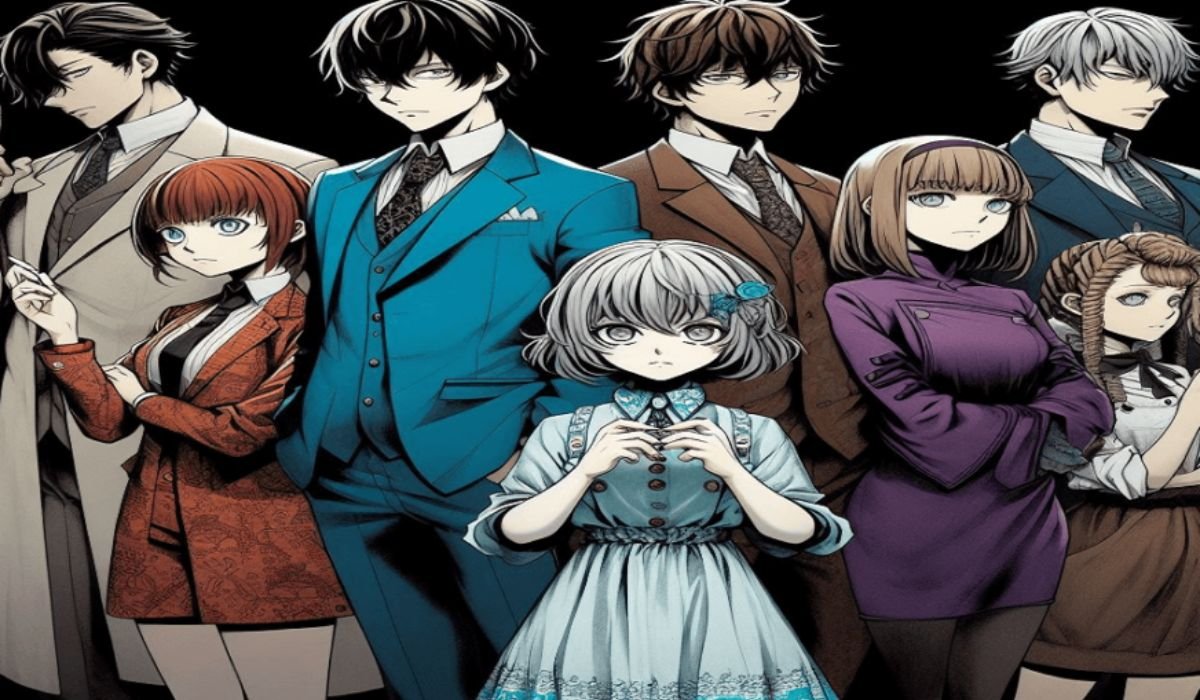Introduction
The seventh chapter of the compelling isekai series, Serial Killer Isekai ni Oritatsu, pushes the limits of survival and morality to the breaking point. This chapter, which introduces significant developments and disclosures that will influence the course of the plot, represents a turning point in the novel. This is one of the fandom’s most talked-about chapters because of the dramatic events and intricate character arcs it presents. We will examine this chapter’s relevance, the main plot turns, and its parallels with other isekai novels as we get deeper into it.
Chapter Recap
Previous Events Leading to Chapter 7
To fully appreciate the developments in Chapter 7, it’s important to recall the key events that have unfolded so far. The story follows a notorious serial killer who, after his death, finds himself reborn in a fantastical world—a classic isekai premise with a dark twist. Throughout the previous chapters, we’ve seen the protagonist struggle with his violent tendencies while navigating this new world’s complex social and political landscape. By the end of Chapter 6, the protagonist is on the brink of a major confrontation, with tensions reaching an all-time high.
Key Characters and Their Roles
Chapter 7 brings several key characters to the forefront:
- The Protagonist: A reincarnated serial killer whose past haunts his every move. His internal conflict between his old ways and the demands of his new life is central to the narrative.
- The Mentor: A wise but morally ambiguous figure who has been guiding the protagonist, often pushing him towards darker choices.
- The Rival: Another powerful figure in the new world, whose clash with the protagonist is inevitable and drives much of the tension in this chapter.
Plot Analysis
Unexpected Twist: The Major Revelation
Chapter 7 is marked by a shocking twist that changes everything we thought we knew about the story. The protagonist discovers a hidden truth about his reincarnation—a revelation that not only shakes his understanding of his purpose in this new world but also hints at a larger, more sinister plot at play. This twist redefines the stakes of the narrative and leaves readers questioning the true nature of the protagonist’s journey.
Character Development: Evolving Through Conflict
The events of Chapter 7 force the protagonist to confront his past more directly than ever before. His interactions with the Mentor and the Rival reveal new layers of his personality, showing both growth and regression. The protagonist’s struggle with his identity—caught between his old self and the person he’s becoming—creates a rich, complex character arc that deepens the emotional impact of the story.
Themes Explored: Morality, Justice, and Redemption
This chapter delves into some of the series’ most profound themes:
- Morality: The protagonist’s actions raise questions about the nature of morality in a world where survival often demands ruthless decisions.
- Justice: The concept of justice is blurred as the protagonist navigates the power structures of the new world, questioning whether true justice is even possible.
- Redemption: As the protagonist faces his past sins, the theme of redemption becomes increasingly prominent, driving much of his internal conflict.
Symbolism and Imagery
Key Symbols: The Bloodstained Blade
One of the most significant symbols in Chapter 7 is the bloodstained blade that the protagonist wields. This weapon is more than just a tool of violence; it represents the weight of his past and the bloodshed that defines his existence. The blade serves as a constant reminder of the protagonist’s dark nature, even as he strives to carve out a new path in this world.
Visual Imagery: Creating a Dark Atmosphere
The author uses vivid descriptions to create a dark and oppressive atmosphere in Chapter 7. The imagery of shadowy forests, blood-soaked battlefields, and the haunting silence that follows each confrontation adds to the chapter’s tension and foreboding. This imagery not only enhances the mood but also underscores the themes of danger and moral ambiguity that run through the story.
Comparison to Other Isekai Series
Unique Elements: A Darker Take on the Isekai Genre
Serial Killer Isekai ni Oritatsu stands out from other isekai series due to its darker themes and morally complex protagonist. Unlike the more traditional, often light-hearted isekai stories, this series explores the darker side of reincarnation and the psychological toll it takes on the characters. The protagonist’s background as a serial killer adds a unique twist, challenging readers to empathize with a character who is far from a typical hero.
Similar Tropes: Common Isekai Elements Reimagined
While the series introduces unique elements, it also plays with common isekai tropes, such as the reincarnation into a fantastical world and the protagonist’s struggle to adapt. However, these tropes are given a fresh perspective through the lens of the protagonist’s dark past, making the familiar feel new and compelling.
Fan Theories and Speculations
Popular Theories: The True Nature of the Protagonist’s Reincarnation
Fans have speculated that the protagonist’s reincarnation may not have been a random act of fate but rather a calculated move by a higher power within the new world. Some believe that the Mentor may have orchestrated the protagonist’s arrival, setting him up as a pawn in a larger, more sinister game. Others theorize that the protagonist’s past life may hold even more secrets, hinting at connections between his previous actions and the new world’s history.
Predictions: What’s Next for the Protagonist?
Based on the events of Chapter 7, it’s likely that the protagonist will face even greater challenges in the upcoming chapters. The revelation about his reincarnation could lead to a deeper exploration of the world’s mysteries, as well as a more intense internal struggle. Fans predict that the protagonist’s relationship with the Mentor will become increasingly strained, possibly leading to a major confrontation.
Conclusion
A pivotal chapter in the series, Serial Killer Isekai ni Oritatsu Chapter 7 offers readers an exciting blend of character growth, philosophical study, and narrative surprises. The disclosures in this chapter not only advance the plot but also help us comprehend the protagonist and the sinister environment he lives in better. With even more emotional and ethically nuanced revelations looming, followers of the tale are left excitedly awaiting what comes next.
FAQs
1. What is the significance of Chapter 7 in “Serial Killer Isekai ni Oritatsu”?
Chapter 7 is a pivotal point in the series, introducing major plot twists and deepening the protagonist’s character development.
2. What are the key themes explored in Chapter 7 of “Serial Killer Isekai ni Oritatsu”?
Chapter 7 explores themes of morality, justice, and redemption as the protagonist confronts his dark past and the new world’s challenges.
3. How does Chapter 7 compare to other isekai series?
Chapter 7 offers a darker take on the isekai genre, with a morally complex protagonist and unique twists on common tropes.
4. What is the major plot twist in “Serial Killer Isekai ni Oritatsu” Chapter 7?
The major plot twist reveals a hidden truth about the protagonist’s reincarnation, altering the stakes and direction of the story.
5. What fan theories surround Chapter 7 of “Serial Killer Isekai ni Oritatsu”?
Fans speculate about the true nature of the protagonist’s reincarnation, with theories suggesting higher powers are at play in his fate.











